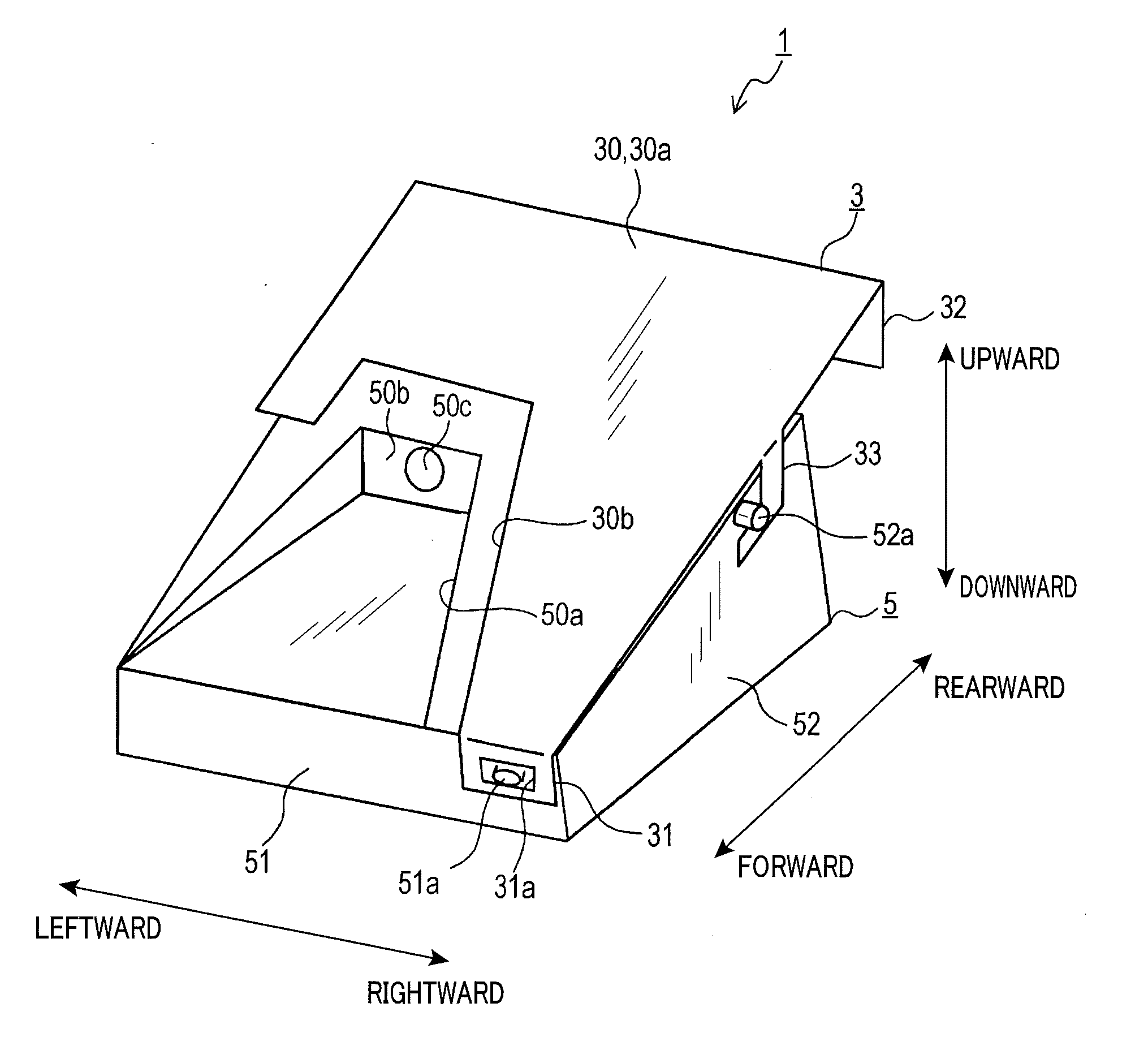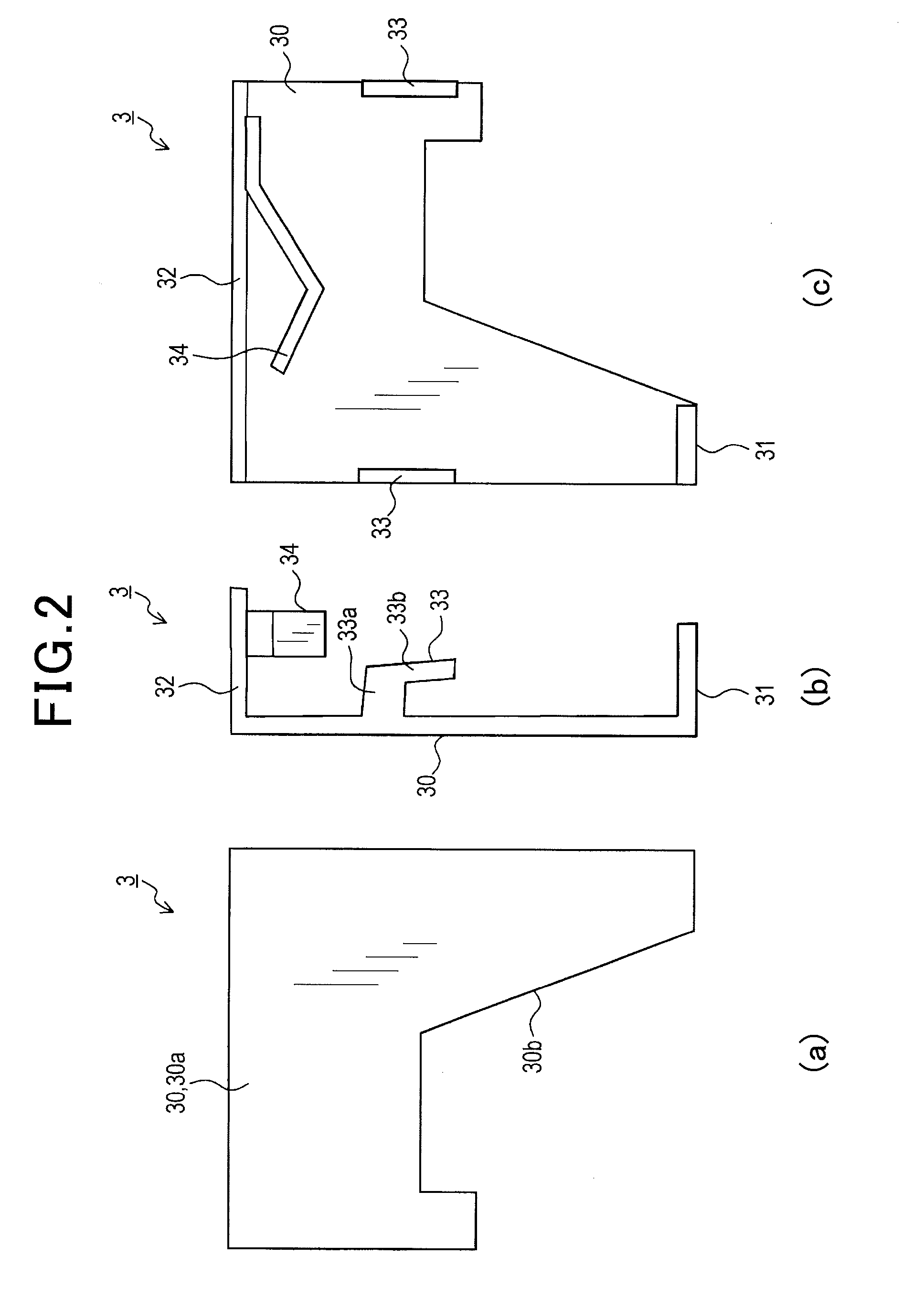In-vehicle camera
a technology for in-vehicle cameras and cameras, which is applied in the field of in-vehicle cameras, can solve the problems of in-vehicle camera body not being completely fixed to the windshield, windshield scratches, and windshield slipping from the vehicl
- Summary
- Abstract
- Description
- Claims
- Application Information
AI Technical Summary
Benefits of technology
Problems solved by technology
Method used
Image
Examples
Embodiment Construction
[0030]With reference to the drawings, hereinafter is described an embodiment of the present invention.
[0031]An in-vehicle camera of the present invention is used for imaging and monitoring the conditions ahead of the vehicle. In the following description, a forward direction is defined to be a direction to which the in-vehicle camera is oriented in a state where the in-vehicle camera is correctly mounted to the windshield of the vehicle at a predetermined position thereon to image the conditions ahead of the vehicle.
[0032]Further, the terms rearward, rightward, leftward, upward and downward used in the following description are the directions based on triangular projection with the forward direction relative to the vehicle being a front (indicated by arrows in FIG. 1), and thus the description referring such as to plan views or rear views is also based on triangular projection. General structure As shown in FIG. 1, an in-vehicle camera 1 of the present embodiment includes a bracket ...
PUM
 Login to view more
Login to view more Abstract
Description
Claims
Application Information
 Login to view more
Login to view more - R&D Engineer
- R&D Manager
- IP Professional
- Industry Leading Data Capabilities
- Powerful AI technology
- Patent DNA Extraction
Browse by: Latest US Patents, China's latest patents, Technical Efficacy Thesaurus, Application Domain, Technology Topic.
© 2024 PatSnap. All rights reserved.Legal|Privacy policy|Modern Slavery Act Transparency Statement|Sitemap



